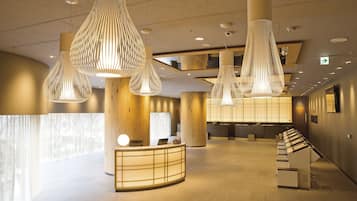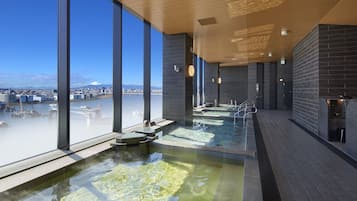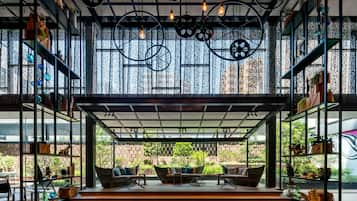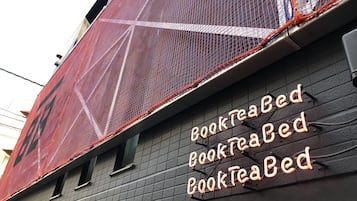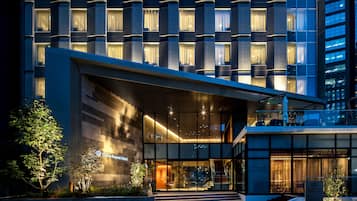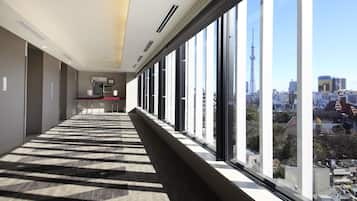To find the best places to visit near Tokyo, head out from the city centre by train, bus or car to the countless towns that retain the history of Edo, famous hot spring resorts, and villages surrounded by nature. After you've finished sightseeing in central Tokyo, why not venture out to explore these fascinating areas?
- 1
Kawagoe (Saitama Prefecture)
Big drama in Little Tokyo

- Gezinnen
- Geschiedenis
- Foto
Kawagoe is about an hour by train northwest from central Tokyo. Having flourished as a castle town and commercial centre during the Edo period, its streets lined with historic warehouse-style merchant houses are now famous, and the city is often called Koedo, or Little Edo, meaning "Little Tokyo".
The symbol of Kawagoe is the Toki no Kane (the Bell of Time). Currently, the bell rings four times a day. About 20 traditional confectionery shops line Kashiya Yokocho, featuring popular sweets made from sweet potatoes, a speciality of the area. Among the many temples and shrines in the area, Hikawa Shrine is the guardian of Kawagoe. Kitain Temple is well known for housing the remains of Edo Castle, with over 500 stone statues of arhats standing in the precincts of the temple.
Locatie: 24-9 Wakitamachi, Kawagoe City, Saitama Prefecture 350-1122, Japan
Telefoonnummer: +81 (0)49-222-5556
Kaart - 2
Kamakura (Kanagawa Prefecture)
Enjoy rich history and nature in the ancient city of Kamakura

- Gezinnen
- Geschiedenis
- Foto
Kamakura is about an hour from Tokyo by train. An ancient capital of the samurai class from the late 12th century, Kamakura is nestled between mountains and the sea and is full of nature. It’s a place worth revisiting again and again.
Home to many notable shrines and temples such as Kotokuin Temple, home to the Great Buddha of Kamakura, Hasedera Temple, and Tsurugaoka Hachimangu Shrine, this area offers beautiful scenery in any season, including plum blossoms, cherry blossoms, hydrangea, higanbana, and autumn leaves, so you’ll have a lovely time simply walking along its green paths. You can also experience Zen meditation, sutra copying, and Dharma talks. For sea views, head to Yuigahama Beach. To sample local delicacies and pick up some souvenirs, try the long-established shops around Kamakura Station.
Locatie: Kamakura Station 1F, 1-1-1 Komachi, Kamakura City, Kanagawa Prefecture 248-0012, Japan
Telefoonnummer: +81 (0)467-23-3050
Kaart - 3
Lake Kawaguchi (Yamanashi Prefecture)
Spectacular views from the lake at the foot of Mt. Fuji

- Gezinnen
- Foto
Lake Kawaguchi is located at the northern foot of sacred Mt. Fuji, Japan’s highest mountain. This is one of the Five Lakes of Fuji and you can enjoy magnificent Mt. Fuji views from the lakeside.
The area is full of sightseeing facilities. Mt. Fuji Panorama Ropeway offers a commanding view of the majestic Mt. Fuji and the beautiful Lake Kawaguchi from an altitude of 1,075 metres. Museums, parks, and other attractions are within easy reach, and visitors can also enjoy fishing and marine sports all year round. Arakurayama Sengen Park, located 3 kilometres from the lake, is popular for its spectacular cherry blossoms and red five-storey pagoda.
Locatie: 3131-2 Kawaguchi, Fujikawaguchiko-cho, Minamitsuru District, Yamanashi Prefecture 401-0304, Japan
Telefoonnummer: +81 (0)555-76-8300
Kaart - 4
Sawara (Chiba Prefecture)
Visit a Little Edo and the gorgeous Katori Jingu Shrine

- Gezinnen
- Foto
Sawara has prospered as a waterfront town since ancient times. It thrived as a transit point for goods being sent on to Edo (present-day Tokyo) via the Tone River water transport system, and the townscape of those days, also known as Koedo (or Little Edo, meaning "Little Tokyo"), can still be seen today.
Sawara is where Ino Tadataka, famous for making the first precise map of Japan, spent the first half of his life as a merchant, and his old house is still standing along the Ono River. Take a ride on a Japanese-style boat along the Ono River and listen to the boatman's explanation while enjoying the view of the town. You can also rent a bicycle to explore the area more easily. Just 4 kilometres to the east is Katori Jingu Shrine, the largest shrine in Shimousa Province, with its spectacularly ornate pavilions.
Locatie: 74-31 I, Katori City, Chiba Prefecture 287-0003, Japan
Telefoonnummer: +81 (0)478-52-6675
Kaart - 5
Hachioji (Tokyo)
Forests and mountaineering on a day trip from Tokyo

- Gezinnen
- Foto
Hachioji is on the western edge of Tokyo. The city once prospered as a post town on the Koshu Kaido highway as well as a centre for raw silk and silk fabrics, earning it the poetic name "Soto" (Mulberry City).
About 40% of the city area is forest. The city is also popular for Mt. Takao and Mt. Jimba, offering casual hikes to the mountains from central Tokyo. Mt. Takao has a cable car, attracting many visitors on holidays heading for the mountaintop Yakuoin Temple, which is dedicated to the Tengu faith, while also giving great views of the area’s natural beauty. Visitors can even catch a glimpse of Mt. Fuji on a clear winter’s day. Soto Japan Heritage Center Hachioji Museum, located in front of Hachioji Station, provides visitors with an opportunity to learn about the history of Mt. Takao and the city of Hachioji.
Locatie: CELEO Hachioji North Building 9F, 1-1 Asahicho, Hachioji City, Tokyo 192-0083, Japan
Telefoonnummer: +81 (0)42-649-2827
Kaart - 6
Akishima (Tokyo)
Try a highball in a city where tap water is as delicious as mineral water

- Gezinnen
Akishima is located in the western part of Tokyo, about 35 kilometres away from the centre of Tokyo. Tama River runs through the southern part of the city, and the Tamagawa josui (water supply) flows through the northern part.
The city of Akishima was born in 1954 with the merger of the town of Showa and the village of Haijima. Haijima Daishi, an old temple founded in the 16th century, bustles with visitors during the Daruma Market and other events. Akishima is proud of its tap water, which uses only groundwater pumped up from deep underground and tastes as good as mineral water. A new speciality using this water is the Haijima Highball. It combines liqueur brewed by a long-established local sake brewery with the Haijima’s famous water. It’s available at stores around Haijima Station.
Locatie: Akishima Station 1F, 562-5 Tanakacho, Akishima City, Tokyo 196-0014
Telefoonnummer: +81 (0)42-519-2331
Kaartfoto door LERK (CC BY-SA 3.0) bewerkt
- 7
Koga (Ibaraki Prefecture)
Explore the historic "Little Kyoto" of the Kanto region

- Gezinnen
- Geschiedenis
Koga is located on the western edge of Ibaraki Prefecture, roughly in the middle of the Kanto region. Blessed with water transport provided by the Tone and Watarase Rivers, the city has a rich and long history.
The name of Koga was mentioned in the Manyoshu (Japan's oldest anthology of poetry), and in the Edo period (1603-1867) the city thrived as a castle town and a post town on the Nikko Kaido highway, earning it the nickname of “Ibaraki's Little Kyoto”. Koga Kubo Park is well known for its Peach Festival in spring, when about 1,500 peach trees come into full bloom. You’ll also see a number of historical sites such as temples and shrines, the ruins of a branch castle, and old houses here and there. In December, there’s a strange festival called the "Koga Pole Lantern Festival" in which contestants hold a nearly 20-metre-long bamboo pole with a lantern attached to each end. The aim of the game is to grapple with each other to extinguish the opponent's lantern.
Locatie: East Side of JR Utsunomiya Line Koga Station, 1-1 Honcho, Koga City, Ibaraki Prefecture 306-0023, Japan
Telefoonnummer: +81 (0)280-30-3434
Kaart - 8
Hakone (Kanagawa Prefecture)
One of Japan's largest hot spring resorts is easy to get to from Tokyo

- Gezinnen
- Geschiedenis
Hakone is a major hot spring resort, with a history dating back to 738. Many people travel here each year.
In the Edo period (1603-1867), the area flourished and became famous as a hot spring resort located along the Tokaido (Tokyo-Kyoto highway). Today, many hot spring resorts, also known as Hakone's 20 hot springs, dot the area from the foot of the Hakone volcano to the mountainside. At the top is Lake Ashi, a caldera lake. Mt. Fuji can be seen from various locations on a clear day. The stone pavements of the old Tokaido road are also picturesque, and the ruins of a barrier station provide a glimpse of the rigorous inspection of traffic during the Edo period. Visit Owakudani and you’ll find a valley that even today is still violently emitting a plume of smoke. You can also enjoy a taste of kurotamago (black eggs) boiled in the hot spring water.
Locatie: 706-35 Yumoto, Hakone, Ashigarashimo District, Kanagawa Prefecture 250-0311, Japan
Telefoonnummer: +81 (0)460-85-5700
Kaart - 9
Kuni District, Nakanojo Town (Gunma Prefecture)
A quiet and beautiful village in the mountains of Gunma

- Avontuur
- Gezinnen
Kuni District lies in the town of Nakanojo, Gunma Prefecture. It’s located on the way between the town of Naganohara at the foot of the mountain and Kusatsu Onsen.
Kuni is 90% mountains, forests, and wildernesses at elevations between 600 and 2,300 metres. It’s a mountain village designated as one of the "Most Beautiful Villages in Japan". Chatsubomigoke Park is a national natural treasure. The only place in Honshu where this rare moss can be seen is here. The group of sericulture farmhouses in Akaiwa Village is a designated Nationally Important Preservation District for Groups of Historic Buildings. Visitors can trace back to the days when sericulture flourished in the area. The closed-down old Taishi Station is a real nostalgia trip. In autumn, all the mountains surrounding the village are covered in magnificent golden leaves.
Locatie: 22 Kosame, Nakanojo-cho, Agatsuma District, Gunma Prefecture 377-1704, Japan
Telefoonnummer: +81 (0)279-95-3342
Kaart - 10
Hayakawa Town (Yamanashi Prefecture)
The oldest hot spring village in Japan at the foot of Japan's Southern Alps

- Avontuur
- Gezinnen
Hayakawa lies on the southwestern edge of Yamanashi Prefecture. It’s a beautiful mountain village nestled in Japan’s Southern Alps at an elevation of over 3,000 metres, the clear waters of Hayakawa River, a tributary of Fuji River, flowing through it.
Each part of the village has its own cultures and old legends. Akasawa Shuku, which is deeply connected with mountain worship, prospered as a lodging place for visitors to Mt. Shichimen. Numerous inns built between the late Edo and Meiji periods still stand today, and the area has been designated as a Nationally Important Preservation District for Groups of Historic Buildings. The Kenjin no Taki Falls have a 42-metre drop and look particularly beautiful in autumn. Legend has it that gold lies in the basin of the waterfall!
Locatie: 650 Koju, Hayakawa-cho, Minamikoma District, Yamanashi Prefecture 409-2732, Japan
Telefoonnummer: +81 (0)556-48-8633
Kaartfoto door Sakaori (CC BY-SA 3.0) bewerkt


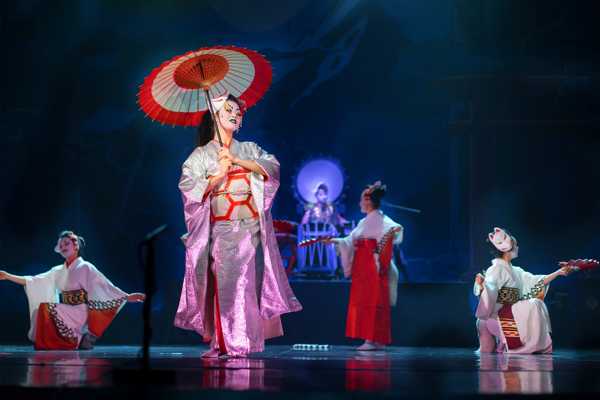

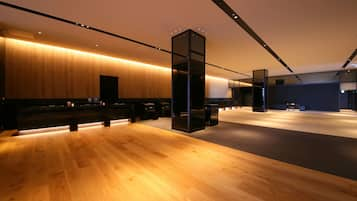
![[Renewal]Quadruple Room- Ground Floor (Cleaning is Optional with Additional Cost), 7 Adults | 1 slaapkamer, een strijkplank/strijkijzer, gratis wifi, beddengoed](https://images.trvl-media.com/lodging/9000000/8490000/8486500/8486490/0236c098.jpg?impolicy=fcrop&w=357&h=201&p=1&q=medium)
